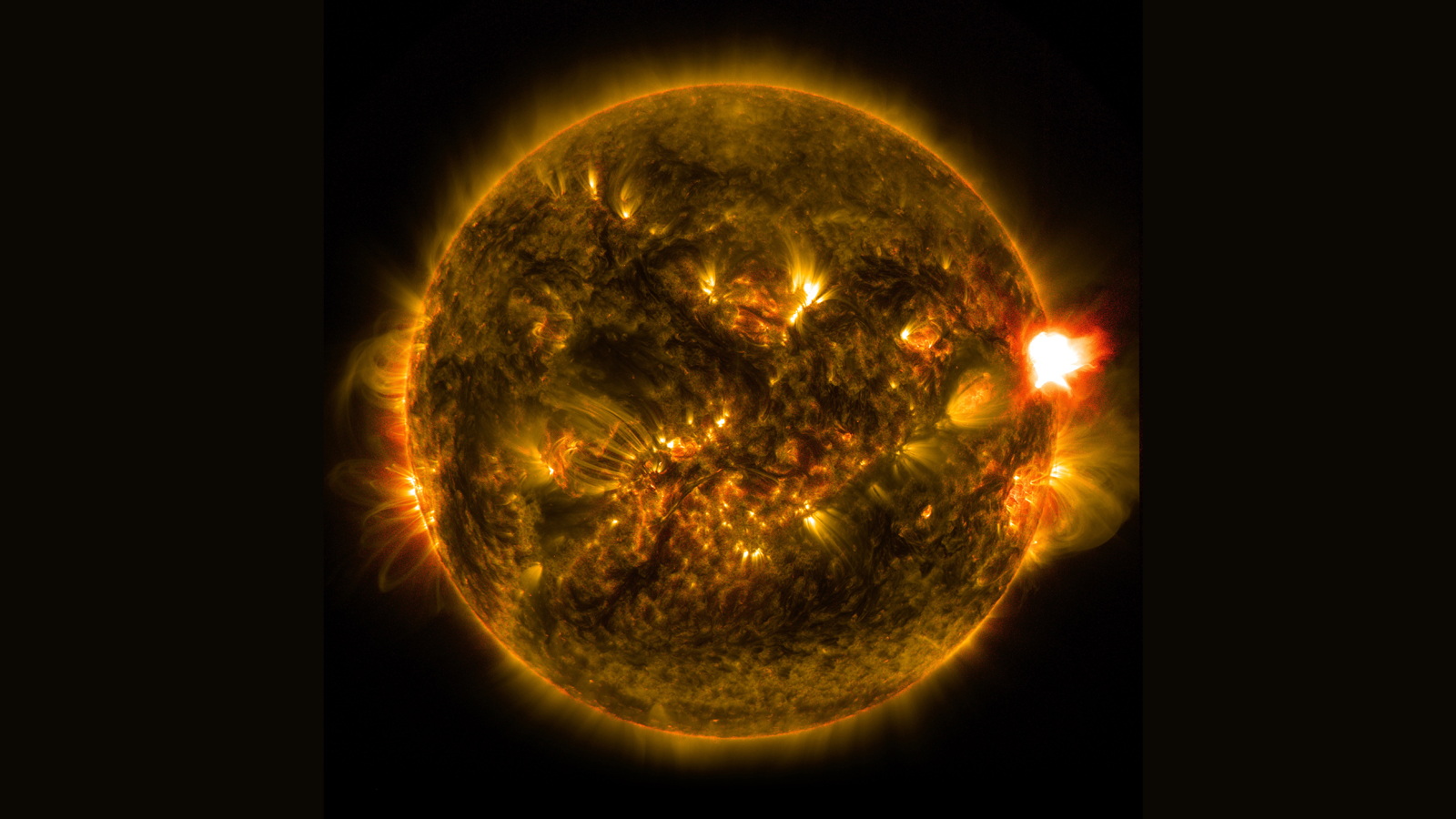
This year has seen a rise in the frequency and intensity of solar activity, a trend expected to persist without having a significant impact on people's daily lives, meteorological experts said.
Among the most intense phenomena from the sun, solar flares are characterized by sudden bursts of brightness in specific areas of the sun's atmosphere. They are often accompanied by an increase in electromagnetic radiation and the release of particles across various energy ranges.
Solar flares are rated based on their strength, with A-class as the weakest, followed by B, C, M and X. The energy released increases tenfold with each successive class.
READ MORE: Chinese satellite captures images of strong solar flare
"The sun unleashed a strong solar flare classified as an X2.2 at 17:13 on Thursday (Beijing time), adding to the total of 7 X-class solar flares unleashed from Sunday through Thursday," said Chen Anqin, chief forecaster of China's National Center for Space Weather on Thursday.
This year's solar flares are more frequent and intense. Up to now, there have been 15 X-class solar flares this year, already exceeding the total of 13 from last year.
Chen Anqin, Chief Forecaster, National Center for Space Weather, China
While each solar flare lasts only minutes to dozens of minutes, the energy unleashed by an X-class solar flare is comparable to the total energy of 100,000 to 1 million strong volcanic eruptions, or the explosion of tens of billions of 100-metric-ton hydrogen bombs, she added.
Chen said there is a high possibility of more X-class solar flares occurring in the next three days and even extending into the foreseeable future.
"This year's solar flares are more frequent and intense," she said. "Up to now, there have been 15 X-class solar flares this year, already exceeding the total of 13 from last year."
However, she said it is a normal phenomenon, as solar activities follow a predictable cycle.
ALSO READ: Solar flares bathe swathes of Siberia in scarlet 'northern lights'
After China observed multiple geomagnetic storm events at the end of March, Wang Jinsong, head of the center, said the average duration of a solar cycle is 11.2 years. With the first known one beginning in 1755, our nearest star is progressing through its 25th solar cycle.
"The peak of the solar cycle is expected to arrive from 2024 through 2025," Wang said, adding that it's normal to see more frequent and complex solar activity during the peak and it is expected to be a moderate-intensity peak this time around.
Solar flares can affect people's lives here on Earth. When such events occur, they can cause disruptions to the Earth's ionosphere. These disruptions have the potential to impact navigation and positioning systems, aviation communications, shortwave radio communications, and emergency communication networks. They may also pose risks to satellites and in-orbit astronauts, Chen said.
However, scientists said the impact of most solar flares on Earth is minimal.
READ MORE: Ancient solar storm revealed by tree rings in French Alps
"While these flares can carry a significant amount of electromagnetic radiation and high-energy particles, only a small portion actually reaches Earth. Moreover, our planet is protected by its own magnetic field, which means that even strong flares have little impact on human health," Chen said.
Xinhua contributed to this story.


